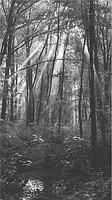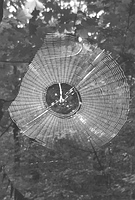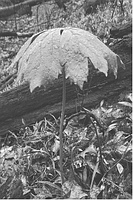Pandemic Walks
December 1, 2020. I am sitting on a rock ledge at what I call the South Overlook, in Tallman Mountain State Park (Sparkill, New York), painstakingly pecking this essay, or at least the start of it, into my cell phone. The majestic Hudson River is spread out beneath me. On other recent visits to this spot, a hawk landed in a nearby tree, and a Bald Eagle with its white head and tail blazing in the sun flew by, and a noisy group of Canada Geese took off from the marsh at the river's edge, and a Screech Owl called from the woods behind me, but today all is quiet.
I reflect back to the start of these Pandemic Walks, which began for me on March 16 - eight and a half months of daily walks, and the great majority of them in this park. I had spent the previous week hiking with relatives in the White Mountains, and although I had heard of Covid, the notion of a pandemic was simply not on my radar screen. Only on the drive home from New Hampshire, when I took a call from my daughter, a scientist working in Scotland, did I begin to understand the severity of the situation. She berated me for potentially having exposed folks a good deal older than me to the disease. I was a bit shocked at the strength of her feelings, for I had not begun to appreciate the sudden change in the world.
That same day, Columbia University announced that it was closing its campus and my own job went completely virtual. I started going on long morning walks to relieve stress, doing the same five-mile loop in Tallman Park every day. At first, their repetitiveness chafed, for I am used to a much wider variety and range. But as days became weeks, and weeks became months, I realized that their very repetitiveness open up the possibility of really experiencing the progression of the seasons.
The mid-March start of my walks was fortuitous, for only the Skunk Cabbage was green. Over the ensuing weeks, I watched Dutchman Breeches sprout, bloom with puffy white blossoms that really do look like old-style pants, set seeds and fade. The trees were as bare in mid-March as they are bare today. I watched them leaf out in the lemon yellow of spring, mature to the dark greens of summer and turn their fall colors. I watched the Park's many seasonal ponds get covered with pollen, become full of singing frogs, dry out with the September drought, and refill again in November.
I began to take notice of where in the park different plants could be found. Solomon Seal favors crannies between the stones of old rock walls. Dwarf Ginseng likes flat and damp patches of forest floor. Spotted Geranium is mostly confined to the edges of paths. I followed the progress of a few individual plants for long periods. I came across an American Wintergreen just after its flower stalk had budded. I must have visited it twenty times before, one morning, finding it in bloom. The park surprised me more than a few times. One morning, Sweet Pepperbushes were blooming in all the damp, wooded areas. I didn't even notice that they were budding! Over the course of the months, I became much better at knowing where to look for birds and at spotting them. Piliated Woodpeckers – beautiful crested birds as big as pigeons - are often found along the section of the bicycle path that passes beneath tall Tulip Trees. One morning I watched one tear a rotting log to pieces, with rapid swings of its sharp beak. Cardinals, on the other hand, seem to favor the bushes on the edge of Piermont Marsh.
I walked on sunny days, cloudy days, in fog and during heavy rain. In my more varied hikes of years past, I might visit a viewpoint but once, and remember it having the weather condition of that moment. In contrast, I have gazed from Tallman Park's overlooks in every kind of sky, save snow, and at every time of day, save midnight, and come to appreciate the whole range of beauties they display.
But I have not forgotten the rest of the world. I would dearly like to get out to Colorado for some skiing and to Florida for some kayaking. And I am hopeful that I shall, eventually. Yet I think that my Pandemic Walks have taught me things about nature that I would have overlooked in these other places. So, I carry on. Who knows what wonders I yet might see?
Bill Menke is a professor of Earth & Environmental Science at Columbia University, an advocate for open spaces and the preservation of nature, and an avid hiker and kayaker. Photos taken by Bill Menke during his Pandemic Walks can be found by Googling "Bill Menke's Slides."





